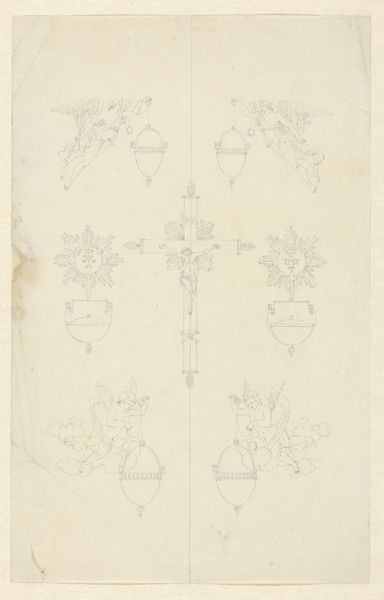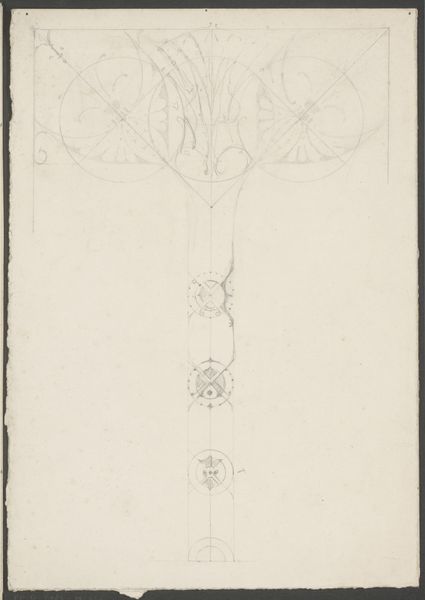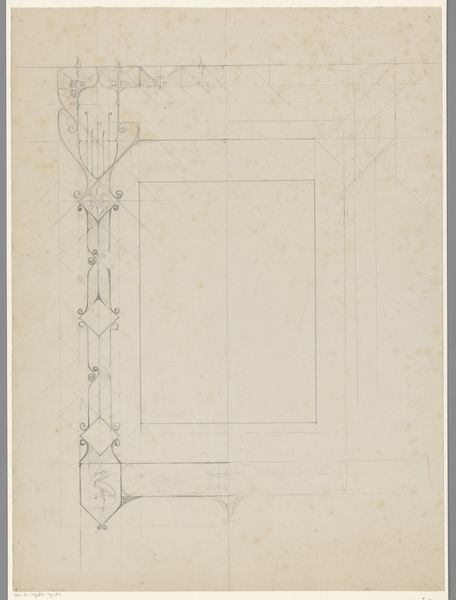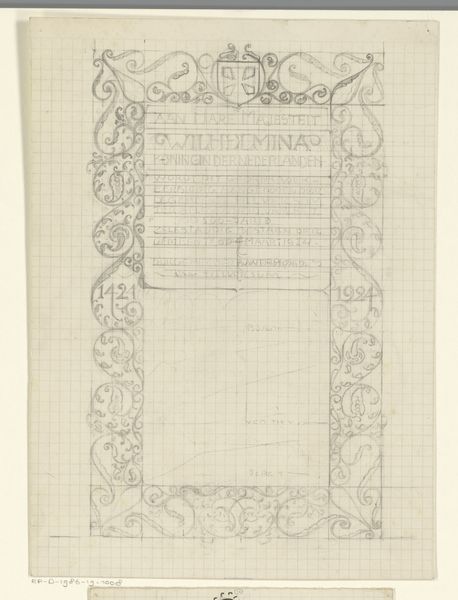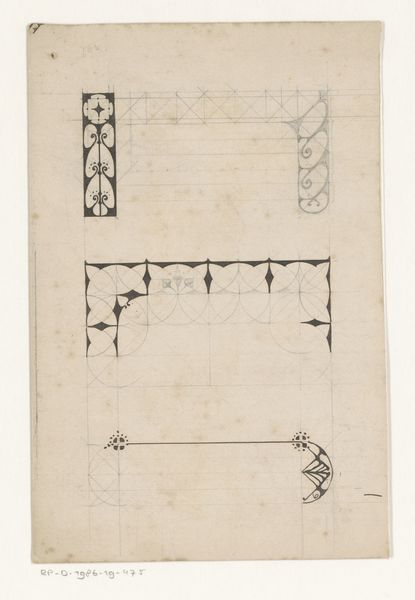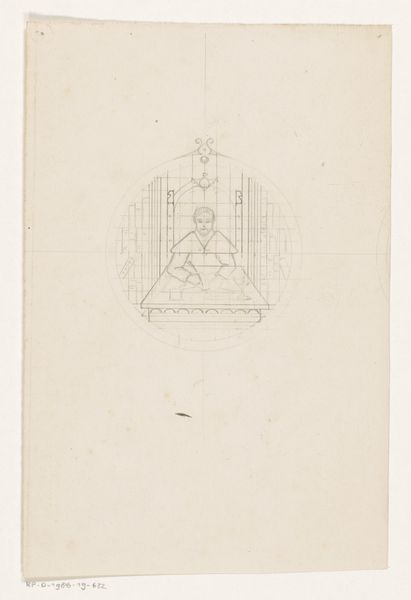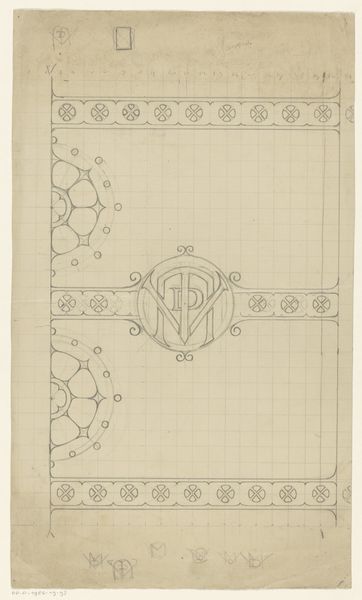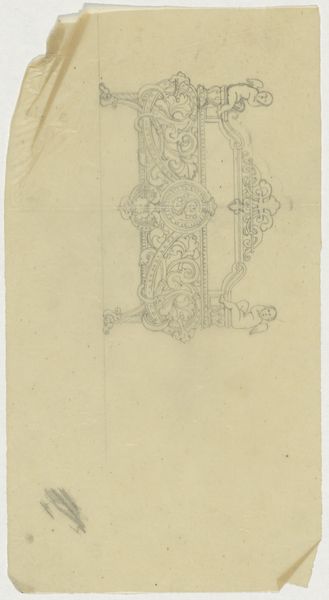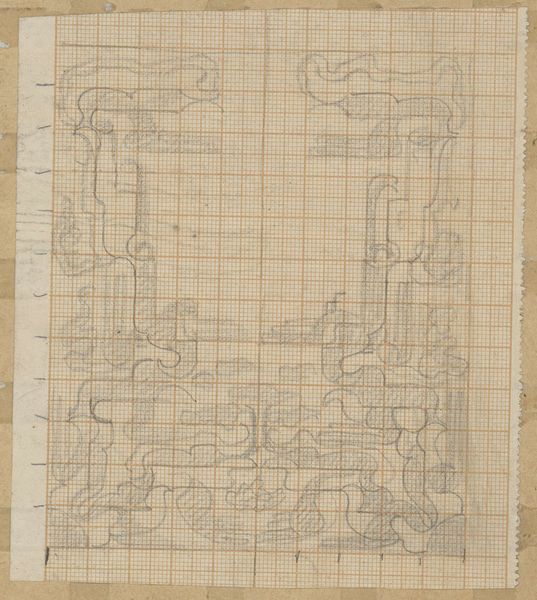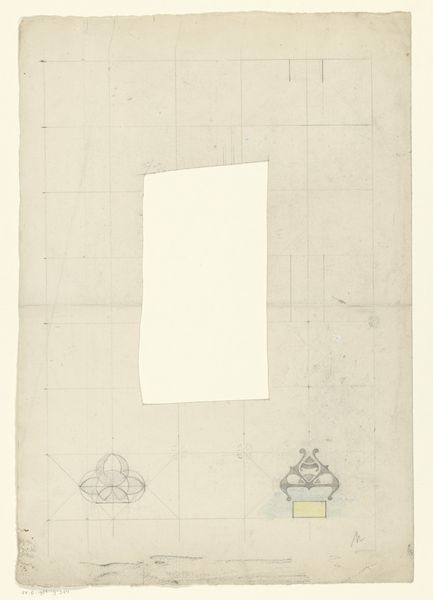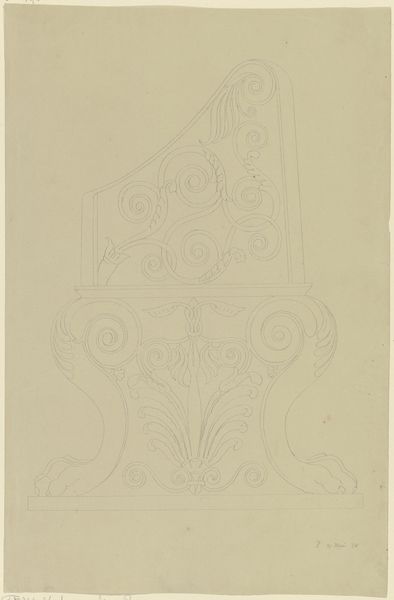
Ontwerp voor een albumblad als aandenken van R.W.P. de Vries Jr. en J.H.C. de Vries-Stoutjesdijk 1884 - 1952
0:00
0:00
drawing, paper, pencil
#
drawing
#
paper
#
geometric
#
pencil
Dimensions: height 286 mm, width 228 mm
Copyright: Rijks Museum: Open Domain
Curator: Looking at this pencil drawing on paper, titled "Ontwerp voor een albumblad als aandenken van R.W.P. de Vries Jr. en J.H.C. de Vries-Stoutjesdijk," and dated between 1884 and 1952, what’s your first impression? Editor: My immediate thought is one of understated elegance. It feels quiet, like a secret whispered across generations, its faint lines holding so much potential meaning. Curator: It's intriguing how a seemingly simple design evokes such emotion, isn't it? The geometric patterns almost feel like an echo of medieval illuminated manuscripts, that are simultaneously a dedication and memory token. How do these patterns and shapes speak to you? Editor: I see echoes of Celtic knotwork, particularly in the swirling, almost floral patterns interwoven with the stark geometry. These geometric figures feel more structural but, still, their recurrence acts as almost familial bonds. It really reads to me like a visual metaphor for remembrance—binding different generations through shared imagery. I wonder how personal such designs were at the time? Curator: Exactly. Keepsake albums were quite popular. These designs acted as personalized history books, not for public eyes but rather for those intimately intertwined in those memories. De Vries, designing it, perhaps meant to establish a timeless visual language for affection. These weren’t made just to record dates but really intended as curated spaces for shared memories. Editor: Thinking about the grid lines faintly visible beneath the design, do you think this was always intended as a preparatory sketch, or was the grid an accepted element in the final creation? It makes me consider the role of precision versus the expressive power of a ‘finished’ artwork. Curator: That's a perceptive point! While technically a draft, I'm tempted to believe that in contexts like intimate mementos, the process became equally significant. Retaining those visible lines maybe inadvertently added authenticity, reflecting the very labor of love infused into its creation. This in itself acts as part of the image, a symbol. Editor: That changes how I see it entirely! Almost turning it into something revolutionary. Thanks for that shift in perspective. I leave today thinking about design, memory and emotion in a brand new way. Curator: As do I! It highlights how even the faintest traces can hold profound cultural resonance when understood through the lens of intention.
Comments
No comments
Be the first to comment and join the conversation on the ultimate creative platform.

